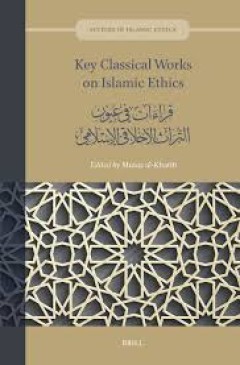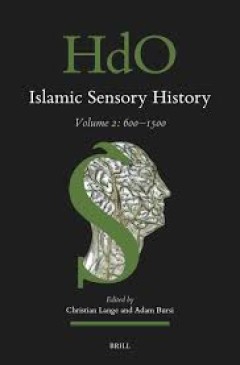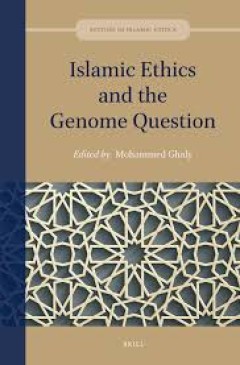Filter by

Kurdish Studies Archive : Vol. 2 No. 1 2014
Kurdish Studies Archive publishes the content of volumes 1 to 10 of Kurdish Studies. This interdisciplinary and peer-reviewed journal was dedicated to publishing high-quality research and scholarship. Since 2023 the journal has been continued as the new Kurdish Studies Journal, published by Brill, and focuses on research, scholarship, and debates in the field of Kurdish studies in a multidiscip…
- Edition
- -
- ISBN/ISSN
- 978-90-04-70653-8
- Collation
- -
- Series Title
- -
- Call Number
- -

Kurdish Studies Archive : Vol. 2 No. 2 2014. Special Issue: Kurdish Linguistics
Kurdish Studies Archive publishes the content of volumes 1 to 10 of Kurdish Studies. This interdisciplinary and peer-reviewed journal was dedicated to publishing high-quality research and scholarship. Since 2023 the journal has been continued as the new Kurdish Studies Journal, published by Brill, and focuses on research, scholarship, and debates in the field of Kurdish studies in a multidiscip…
- Edition
- -
- ISBN/ISSN
- 978-90-04-70655-2
- Collation
- -
- Series Title
- -
- Call Number
- -

Kurdish Studies Archive : Vol. 3 No. 2 2015. Special Issue: Kurdish Diaspora
Kurdish Studies Archive publishes the content of volumes 1 to 10 of Kurdish Studies. This interdisciplinary and peer-reviewed journal was dedicated to publishing high-quality research and scholarship. Since 2023 the journal has been continued as the new Kurdish Studies Journal, published by Brill, and focuses on research, scholarship, and debates in the field of Kurdish studies in a multidiscip…
- Edition
- -
- ISBN/ISSN
- 978-90-04-70659-0
- Collation
- -
- Series Title
- -
- Call Number
- -

Kurdish Studies Archive : Vol. 9 No. 1 2021. Special Issue: Mass Violence and…
Kurdish Studies Archive publishes the content of volumes 1 to 10 of Kurdish Studies. This interdisciplinary and peer-reviewed journal was dedicated to publishing high-quality research and scholarship. Since 2023 the journal has been continued as the new Kurdish Studies Journal, published by Brill, and focuses on research, scholarship, and debates in the field of Kurdish studies in a multidiscip…
- Edition
- -
- ISBN/ISSN
- 978-90-04-70040-6
- Collation
- -
- Series Title
- -
- Call Number
- -

Kurdish Studies Archive : Vol. 10 No. 2 2022
Kurdish Studies Archive publishes the content of volumes 1 to 10 of Kurdish Studies. This interdisciplinary and peer-reviewed journal was dedicated to publishing high-quality research and scholarship. Since 2023 the journal has been continued as the new Kurdish Studies Journal, published by Brill, and focuses on research, scholarship, and debates in the field of Kurdish studies in a multidiscip…
- Edition
- -
- ISBN/ISSN
- 978-90-04-72625-3
- Collation
- -
- Series Title
- -
- Call Number
- -

Kurdish Studies Archive : Vol. 5 No. 2 2017
Kurdish Studies Archive publishes the content of volumes 1 to 10 of Kurdish Studies. This interdisciplinary and peer-reviewed journal was dedicated to publishing high-quality research and scholarship. Since 2023 the journal has been continued as the new Kurdish Studies Journal, published by Brill, and focuses on research, scholarship, and debates in the field of Kurdish studies in a multidiscip…
- Edition
- -
- ISBN/ISSN
- 978-90-04-50617-6
- Collation
- -
- Series Title
- -
- Call Number
- -

Key Classical Works on Islamic Ethics : قراءات في عيون الترا…
This book transcends the narrow philosophical concept of ethics confined to the Greek model, demonstrating that “Islamic ethics” is an interdisciplinary field. It encompasses both theoretical and practical ethics, incorporating disciplines such as Qurʾān, ḥadīth, biography of the Prophet (sīra), theology (kalām), jurisprudence (fiqh), Sufism, and philosophy. The book provides analyti…
- Edition
- -
- ISBN/ISSN
- 978-90-04-45947-2
- Collation
- xxxiv, 341 pp.
- Series Title
- Studies in Islamic Ethics, Volume: 7
- Call Number
- -

Islamic Sensory History : Volume 2: 600–1500
Islamic Sensory History, Volume 2: 600–1500 presents a selection of texts translated into English from Arabic and Persian. These selected texts all offer illustrative engagements with issues related to the sensorium in different times, places, and social milieus throughout the early and medieval history of Islamic societies. Each chapter is prefaced by an introductory essay by the translator,…
- Edition
- -
- ISBN/ISSN
- 978-90-04-51593-2
- Collation
- xxii, 594 pp.
- Series Title
- Handbook of Oriental Studies. Section 1 The Near and Middle East, Volume: 182.2
- Call Number
- -

Islamic Ethics and the Genome Question
Islamic Ethics and the Genome Question is one of the very first academic works, which examine the field of genomics from an Islamic perspective. This twelve-chapter volume presents the results from a pioneering seminar held in 2017 at the Research Center for Islamic Legislation & Ethics, College of Islamic Studies, Hamad Bin Khalifa University, in Qatar. The contributors to this volume, coming …
- Edition
- -
- ISBN/ISSN
- 978-90-04-39213-7
- Collation
- xiv, 340 pp.
- Series Title
- Studies in Islamic Ethics, Volume: 1
- Call Number
- -

Intra-European Litigation in Eighteenth-Century Izmir : The Role of the Merch…
Scholars have long debated the use of law to settle international trade disputes in the early modern period. In this book, Tijl Vanneste uses the case study of commercial litigation before the Dutch consular court of Izmir to argue that merchants relied on a particular blend of mercantile customs, which he calls ‘the merchants’ style’, and specific legal forms and procedures, laid down in…
- Edition
- -
- ISBN/ISSN
- 978-90-04-49823-5
- Collation
- Approx. 390 pp.
- Series Title
- Mediterranean Reconfigurations, Volume: 4
- Call Number
- -
 Computer Science, Information & General Works
Computer Science, Information & General Works  Philosophy & Psychology
Philosophy & Psychology  Religion
Religion  Social Sciences
Social Sciences  Language
Language  Pure Science
Pure Science  Applied Sciences
Applied Sciences  Art & Recreation
Art & Recreation  Literature
Literature  History & Geography
History & Geography